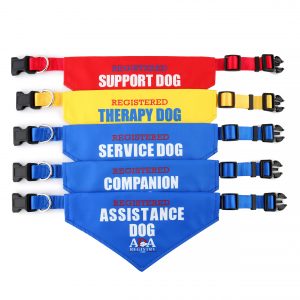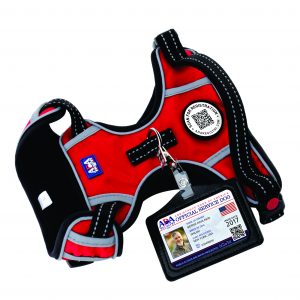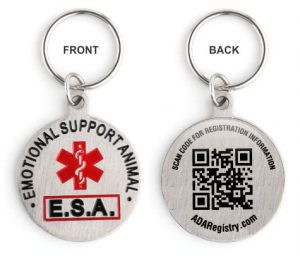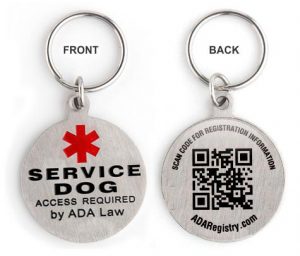Service Dogs And National Parks
Planning a vacation with a Service Dog to national parks,national forests and other Dept of Interior covered entities.
The National Parks Service has the most spectacular of the national treasures.
If we plan ahead we can greatly enjoy going to these places with our service dog to assist us to be able to do so.
Plan ahead and find out the programs of the federal areas you plan on visiting .
Some may have a few rules you want to know ahead of time to protect the public and or preserve their program. Also find out what risks you may need to plan for per the environment or climate of the area you are going to visit.
Desert areas are hotter than what you may be used to . Or you may need to use foot protection on your service dog because of natural source chemical hazards.
Most of these areas can be far away from veterinary care. So plan ahead for the safety and welfare of your service dog.
The National Parks Service and other federal lands are under the jurisdiction of U.S. Department of the Interior
Remember the Department of Interior made their policy to follow the ADA service dog definitions even though they fall under the 504 rehab act regarding service dogs in all national parks, forests, monuments ,wilderness areas and basically anything under the Dept of Interior jurisdiction in 2002
http://www.nps.gov/policy/serviceanimals.pdf
Disability Rights Coordinators
http://www.doi.gov/pmb/eeo/NPS-Coordinators.cfm
lists them for each area
National Park Service policy.
http://www.nps.gov/policy/serviceanimals.pdf
Accessability policy links for various disability issues
http://www.nps.gov/applications/npspolicy/search.cfm
Back country access Guide/Service Animal Permit
If you use a SD in the restricted backcountry in some parks or wilderness areas you may be required to get a permit . Plan ahead, research and find out where you might need one. Yellowstone for example is one such place.
This is so they KNOW you are there and they can keep track and make sure you are OK . There are certain areas you may be restricted from due to wildlife risks such as where a wolfpack has it territory.
This is to protect both the wildlife and the people.
Quote
II. Use of guide dogs for the hearing and vision impaired and other service animals in the backcountry is allowed with the following guidelines:
A service animal is defined as an animal that performs some of the
functions and tasks that the individual with a disability cannot perform such as carrying a pack for persons with mobility impairments, assisting persons with balance, or alerting medically dependent persons of specific conditions (such as oncoming seizures).
Prior to accessing the backcountry with a guide dog or service animal, individuals with disabilities shall complete and obtain the Guide/Service Animal Permit; ask for Yell 470.
Companion dogs or other pets for the mentally or emotionally impaired are not allowed in the backcountry, or on nature trails or boardwalks.
The information on this page is also available in a free handout, Yell 446.
———————–
(Here is ANOTHER , Remember they can restrict certain areas to protect their programs or the safety of persons or wildlife if needed. )
http://www.nps.gov/refdesk/DOrders/DOrder41.html
DIRECTOR’S ORDER #41: WILDERNESS PRESERVATION AND MANAGEMENT
Policies: 9.1.2
Accessibility for Persons with Disabilities
<>
The National Park Service will allow service animals within wilderness when it makes these areas accessible and usable by persons with disabilities. The ADA defines a service animal as any guide dog, signal dog, or other animal individually trained to provide assistance to a person with a disability. Service animals are required by persons with disabilities in day-to-day activities, and are permitted in wilderness. The training of service animals in wilderness is only allowed with specific permission from the park superintendent. Documentation must be provided that the animal is legitimately in training to be a service animal.
————
Ok why get a Access Pass if you use a service dog?
The access pass verifies for the NPS facility entrance employees that you have a documented disability that meets their definitions . This makes it easier to show you are disabled under their definitions. Then they look at your service dog and see the service dog is obviously trained and under control you will be less likely to have an access issue.
Where passes are issued
http://store.usgs.gov/pass/PassIssuanceList.pdf
What is the Access Pass?
http://www.us-parks.com/golden-access-passport.html
The Access Pass is the replacement for the Golden Access Passport as of January 2007. The pass is for citizens or permanent residents of the United States, regardless of age, who have been medically determined to have a permanent disability. It provides access to, and use of, any Federal recreation site that charges an Entrance or Standard Amenity Fee and provides a discount on some Expanded Amenity Fees. The pass must be obtained in person.
What does it cost and how long is it valid?
The Access Pass is free, and it is valid for the lifetime of the pass holder. Photo identification may be requested to verify pass ownership. If I have a Golden Access Passport is it still valid? Yes, Golden Access Passports are valid for a lifetime and are equivalent to the new Access Pass.
Identifying your SD
Why cape a service dog in a national park or wilderness area?
It may not be required according to the info on the National Parks Service sites .
But, do you really want to force a national parks employee to have to hike down from a distance and ask you each time you are out about the dog?
Sometimes that can be MILES!!
Normally they can use their binoculars and see a cape or working harness on a service dog . This saves them the time and trouble of having to physically come over and ask you about the SD.
They really don’t want to have to come and bother you.
This also lets fellow visitors know on sight this is not a pet.
Many visitors to the National Parks are from other countries . So they may not be familiar with Service dogs or only know their own country’s concept of what a service dog is.
Also at a trail head especially in places like Yellowstone if you see a Park service employee, ask them about the trails and areas you plan on using that day.
They can warn you of potential hazards to your dog and even you. Sometimes certain wildlife are in an area like a ticked off mother moose or an irritated buffalo. Also you can ask about the conditions of the path surfaces themselves. Some of the pathways have high acid content on the walkways or the dirt pathways and can injure the service dog’s feet if you don’t use shoes or wash their feet with water afterward .
Things can change in a park from week to week regarding conditions and movement of wildlife .
______________________
If you have the unfortunate experience of having an access denial due to having your service dog with you .
Listed below are some resources to help you resolve it.
Sometimes with a single phone call it can be taken care of. But it may take time .
Hopefully you can get it resolved so you can continue to enjoy your vacation .
You may be able to reach the local NPS Disability Rights Coordinators that handle the complaints for the park or region you are at. They may be able to get it rapidly resolved if it is not a holiday or weekend.
That link is up near the top.
Access Denials –
Below are a series of links explaining who to reach and how the proccess works.
Public Civil Rights
http://www.doi.gov/pmb/eeo/public-civil-rights.cfm
Requirements and process for complaints of discrimination filed by visitors
http://www.nps.gov/aboutus/upload/nps_eeo_technical_guidance_no2008_001_…
Subject: Complaints filed under Section 504 of the Rehabilitation Act of 1973, as Amended The purpose of this directive is to communicate to you the Section 504 requirements and process for complaints of discrimination filed by visitors to our sites.
Section 504 of the Rehabilitation Act of 1973, as amended, prohibits discrimination based on disability in federally conducted programs of the Department of the Interior (DOl).
The complainant has 180 days after the incident of alleged discrimination to file a complaint.
Within 5 days of receipt of a complaint, the EEO Program Office will provide an acknowledgement letter to the complainant
Office of Civil Rights
http://www.doi.gov/pmb/eeo/index.cfm
The Office of Civil Rights is the focal point for all civil rights, equal opportunity programs, and affirmative employment functions in the Department of the Interior.
PUBLIC CIVIL RIGHTS COORDINATORS by Bureau
http://www.doi.gov/pmb/eeo/upload/PUBLIC-CIVIL-RIGHTS-COORDINATORS-5-22-…
lists direct dial numbers and some emails.








